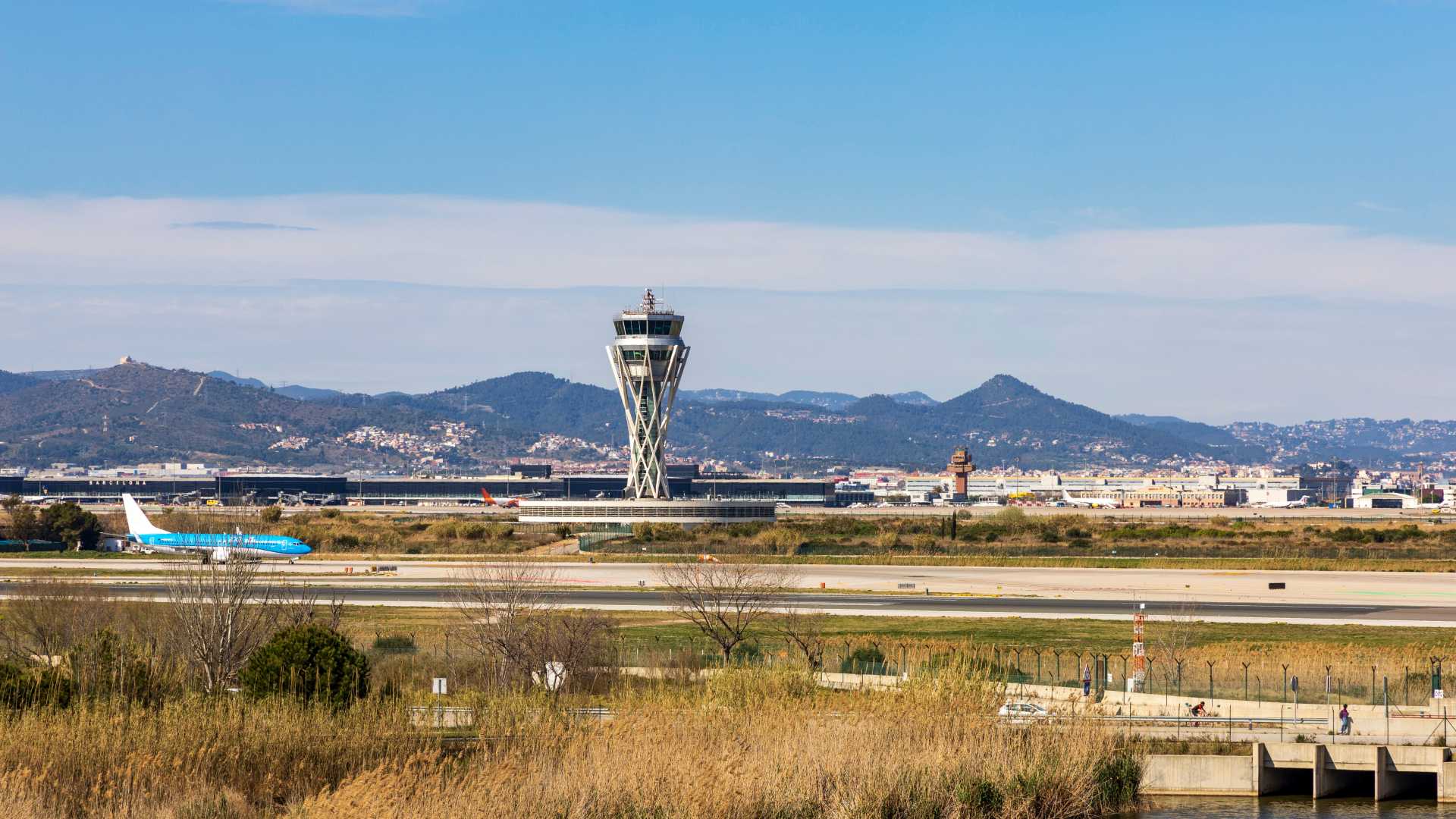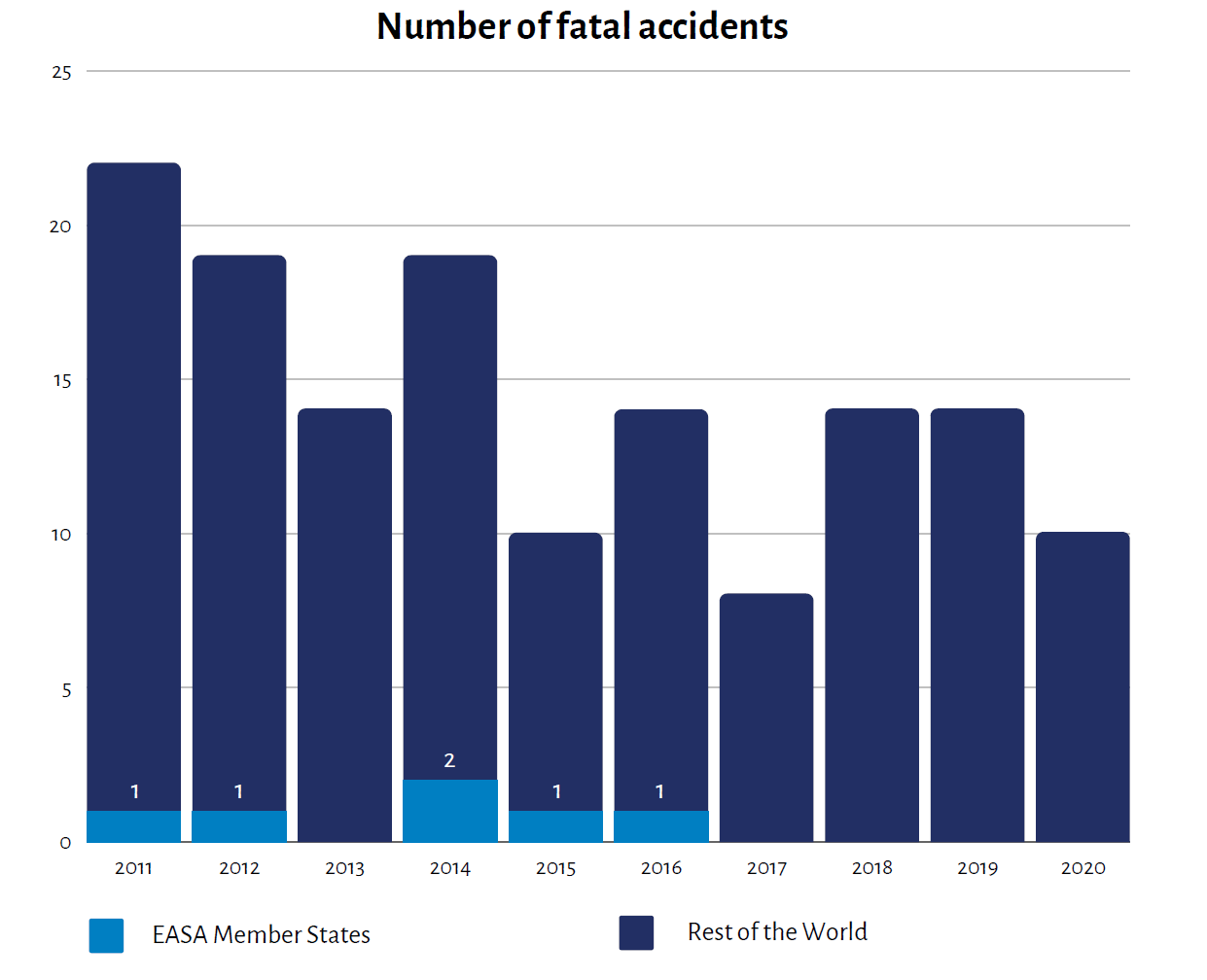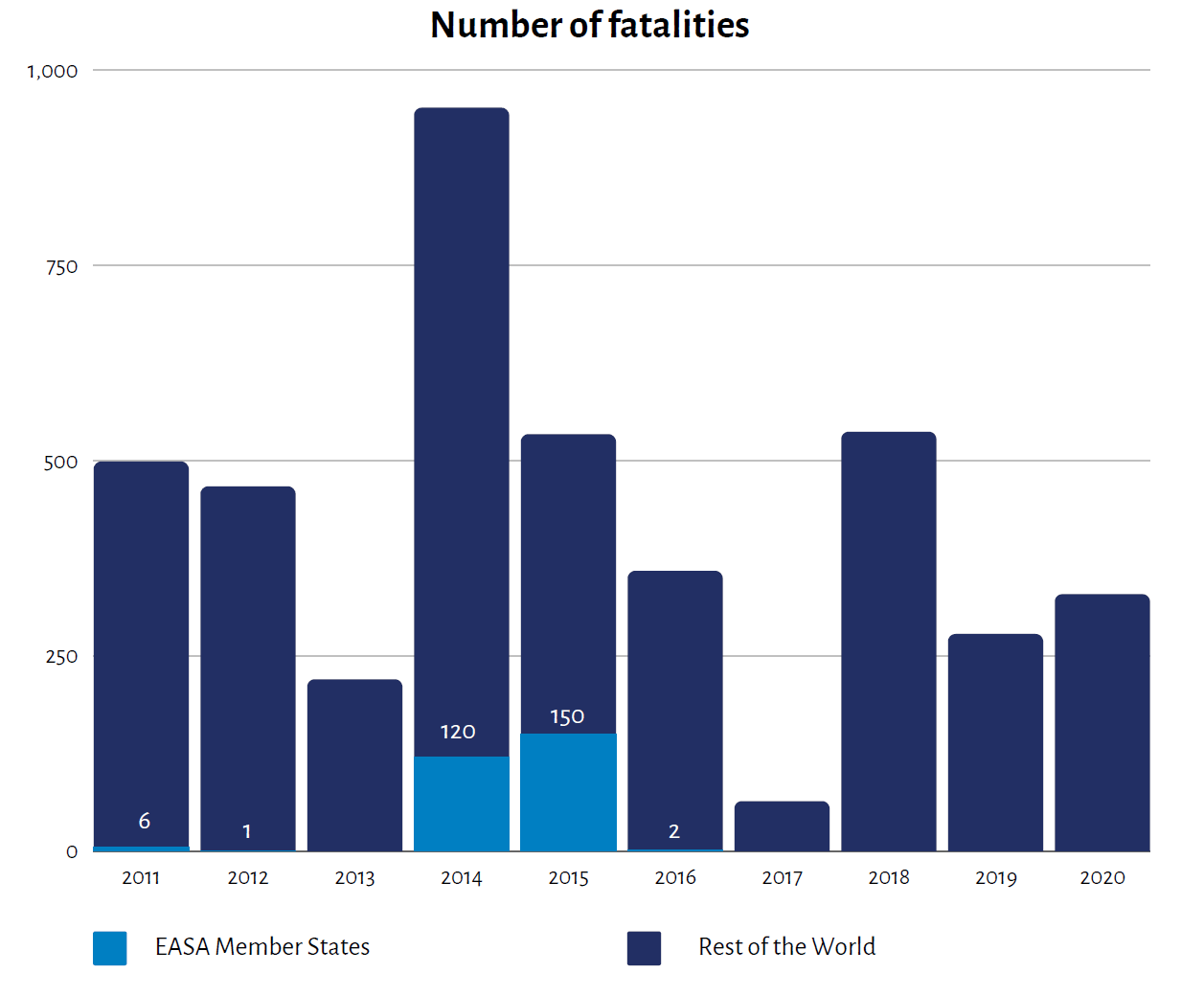The aviation sector was massively disrupted....
As a result of the COVID-19 pandemic, civil aviation in 2020 was reduced to a fraction of its normal activities.Given the level of disruption, it will take some time before the consequences are fully understood. Someorganisations have been forced to cease operations and many others are asking how they will survive untiltraffic picks up again.
To address this challenge, EASA has set up a task force with representatives of national authorities and aviationstakeholders to prepare for the Return to Normal Operations (RNO). The Agency, working with the EuropeanCentre for Disease Prevention and Control (ECDC), established the Aviation Health Safety Protocol, which sets out coherent health safety measures to protect both passengers and aviation industry staff. With the support of national authorities a monitoring process has been put in place by EASA to assess the implementation of thisprotocol by airports, airlines and passengers. Data shows that air travel does not increase the risk of catchingCOVID-19.
....leading to a new safety landscape

Prior to the crisis, the safety landscape was stable and known. We are now faced with a totally new situation where new risks have emerged. In conjunction with its safety partners and in particular the National AviationAuthorities of the EU Member States, EASA has identified and captured these new risks in the Agency’s safety risk registers. These risks include dealing with the rapid storage and de-storage of aircraft, management ofwildlife hazards due to the reduced amount of aviation activity, and the degradation of skills and knowledge of aviation personnel caused by their reduced activity. Supported by EASA’s collaborative approach, EASA established a COVID-19 Safety Risk Portfolio that listed the identified risks together with appropriate mitigations. . The Agency has worked relentlessly and collectively to ensure that safety has not been compromised, despite the most brutal crisis ever experienced by aviation. This has highlighted the resilience of the EASA Safety Risk Management process. Over 20 different guidelines have been provided to the industry, covering important topics including crew training and checking, the carrying of cargo in passenger compartments and the carriage of vaccines. Additionally, in these different times, a virtual annual EASA Safety Conference took place, which brought our external partners together to further strengthen the recovery process.
The rise of cyber-security and security threats impacting safety....
As a mechanical effect of its digital transformation, the aviation sector is subject to an ever-growing number of cyber-attacks.This year has seen a significant increase in cyber-events impacting some of Europe’s major aviation organisations, thereby exposing systemic vulnerabilities in this area. Conflict zones is also a growing concern, as tragically illustrated by the downing of a B737 in Iran in January 2020.
.... is calling for an integrated risk management approach
These considerable challenges have highlighted the importance of integrated management, there by underscoring why the Agency has been devoting significant resources to physical and cyber-security risk management, where it impacts safety. This will lead to the development of a total system approach in terms of risk intelligence, i.e. our capacity to identify and mitigate risks from safety or security origins.
The Agency has now to federate the European initiatives in order to ensure cyber-security resilience of the aviation system. Similarly for the conflict zones the Agency, in collaboration with the European Commission and the Member States, has decided to set up an operational platform that will provide quick alerts to air space users of situations requiring high attention and or action, thereby helping to reduce risks in almost real-time.

Preparing for 2021
EASA will continue to work with its safety partners to evolve the safety system and look to the future by further developing the Data4Safety Programme. This programme makes use of the most advanced technologies of big data and data science to collect, aggregate and analyse aviation data in one platform in order to identify and assess systemic safety risks in aviation in Europe. This will significantly augment our current techniques and enable improved detection of potential risks.
In June 2021, the SAFE 360 conference will enable the 360° industry-wide review of the most critical safety issues that are currently impeding recovery. An important objective for the Agency will be to further work on integrating safety, security and cyber-security risks to ensure a total system risk management approach. Such a consolidation of safety activities and intelligence capabilities will greatly enhance the European Aviation Community’s reactiveness to aviation risks. There are also a wide range of safety actions planned in the European Plan forAviation Safety (EPAS) that will further strengthen the aviation system as we return to normal operations.
Commercial aviation safety worldwide
With reference to worldwide safety data, in 2020 there were 10 fatal accidents involving commercial air transport large aeroplanes and 327 fatalities. These preliminary figures are in line with those of the past 10 years, despite the significant downturn in traffic in 2020.
There was a 51% reduction of seats offered by airlines overall in 2020, (source ICAO): the number of accidents is the same as 2015 and the number of fatalities is close to those in 2016.
EASA Member States’ operators did not contribute to the number of global fatal accidents and fatalities in 2020, however worldwide it has been quite a difficult year for aviation safety.
Of the 327 total fatalities recorded in 2020, just over half that number resulted from the accidental shooting down of the Ukraine International Airlines B737 over Iran on 8 January 2020, killing 176 passengers and crew. This accident happened before the COVID-19 pandemic had impacted the worldwide commercial aviation system.
Aviation safety in the EASA Member States
There were no fatal accidents in commercial airline operations involving an EASA Member State operator in 2020.


Fatal Accidents in 2020
According to our preliminary data, the following fatal accidents occurred during 2020:
- 8 January – B737 crashed shortly after take-off from Tehran, Iran, with 176 fatalities.
- 5 February – B737 overran the runway while landing in poor weather at Istanbul, Turkey, with 3 fatalities.
- 29 March – IAI Westwind crashed on take-off from Manila-Ninoy Aquino Airport, Philippines, with 8 fatalities.
- 4 May – EMB120 medical supply flight crashed on approach to Bardale, Somalia, with 6 fatalities.
- 5 May – Learjet 35A crashed on approach to Esquel Airport, Argentina, with 3 fatalities.
- 8 May – B737 collided with a person on landing at Austin-Bergstrom International Airport, USA, with 1 fatality to the person on the ground.
- 22 May – A320 crashed during its second approach to land at Karachi-Jinnah International Airport, Pakistan, with 98 fatalities including one person on the ground.
- 7 August – B737 crashed during its second approach to land at Kozhikode-Calicut Airport, India, with 21 fatalities.
- 13 August – L410 crashed in Kahuzi-Biega National Park while en route to Bukavu-Kavumu Airport, Democratic Republic of the Congo, with 4 fatalities.
- 22 August – An26 crashed shortly after take-off from Juba Airport, South Sudan, with 7 fatalities.



You are not allowed to comment on content in a group you are not member of.
Air Operations